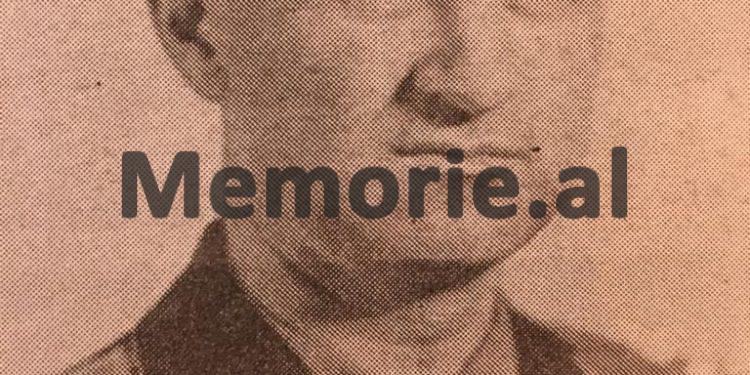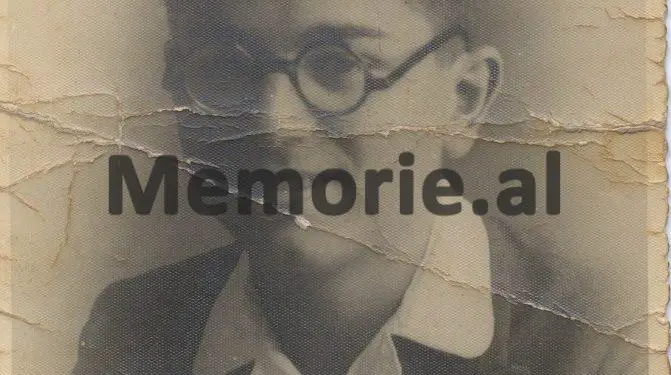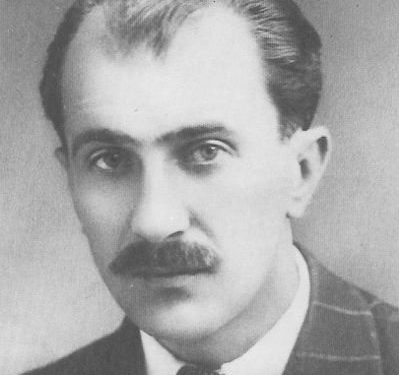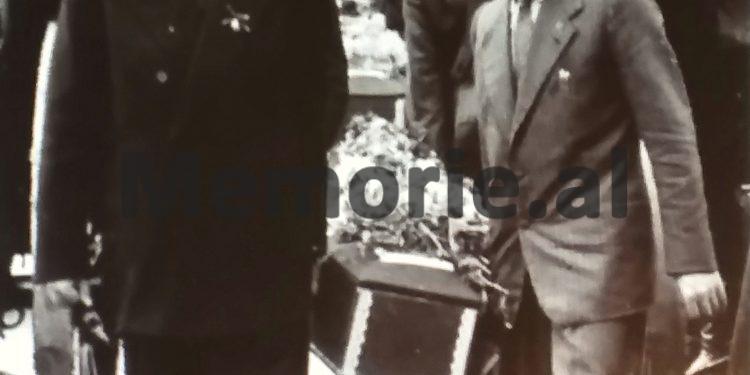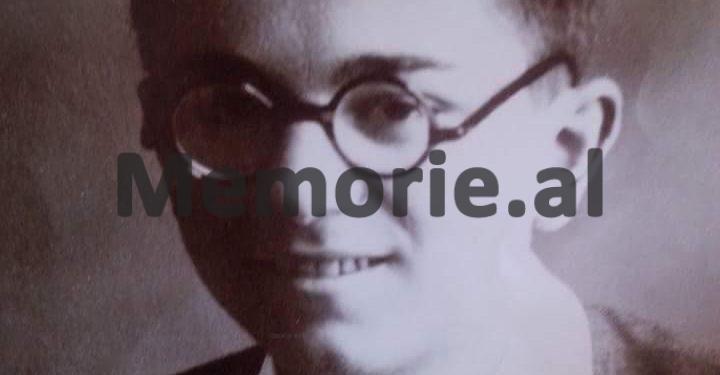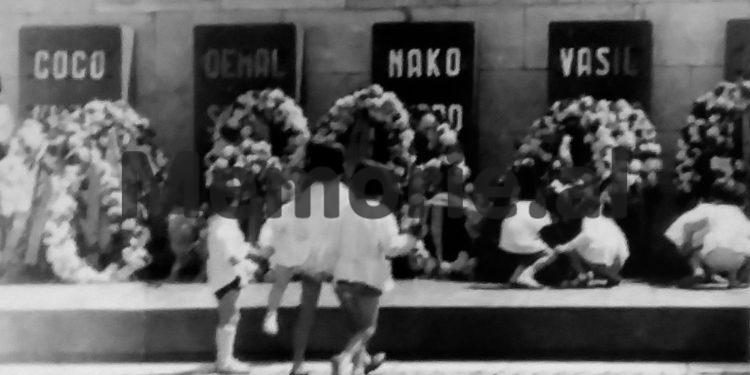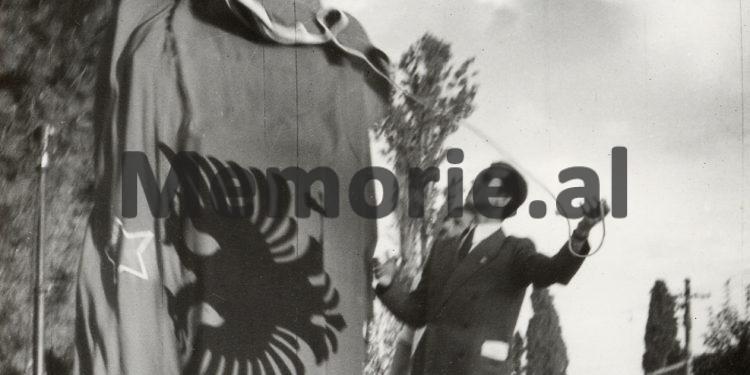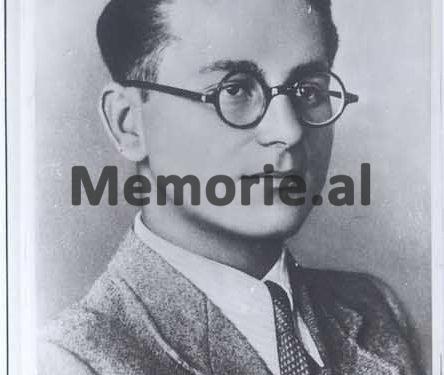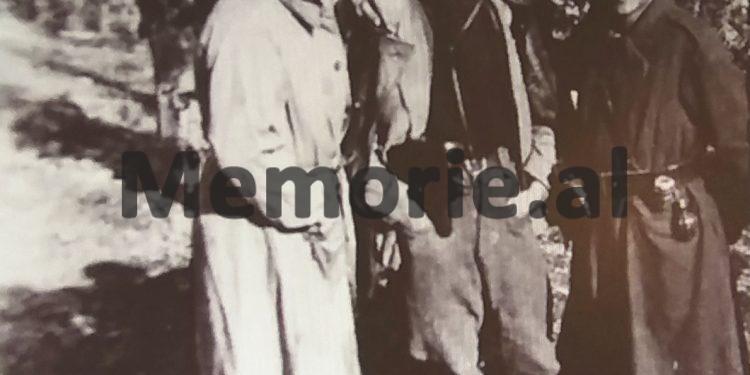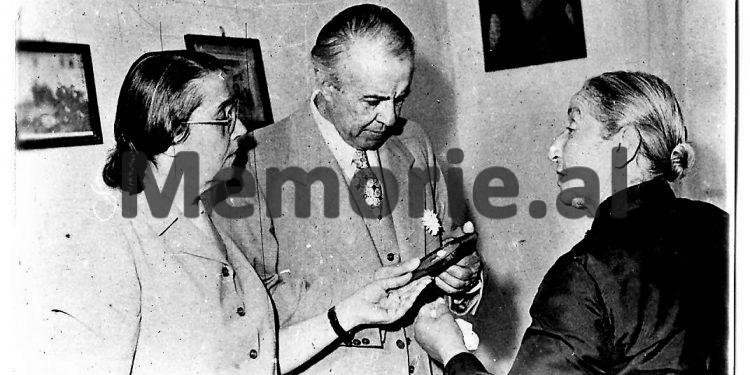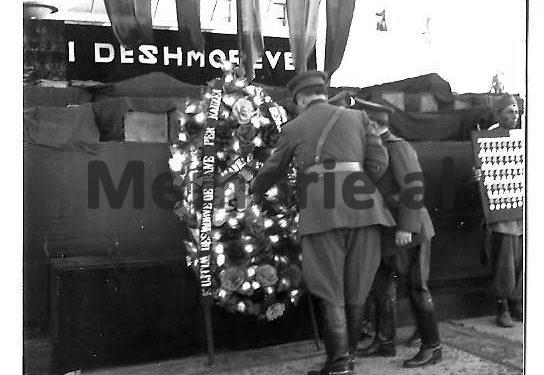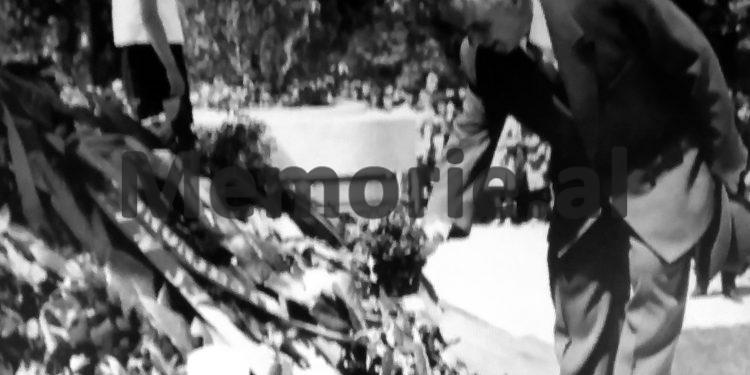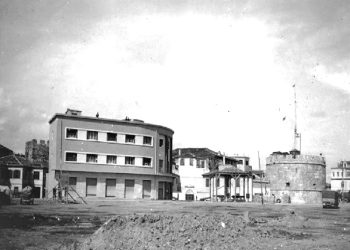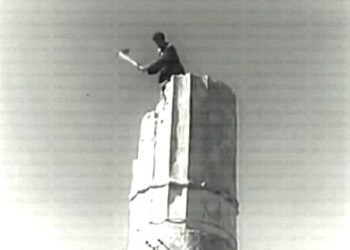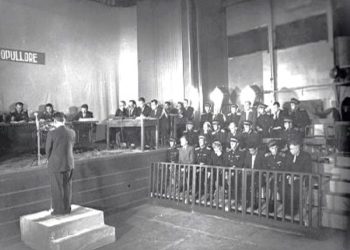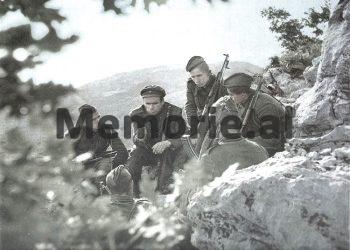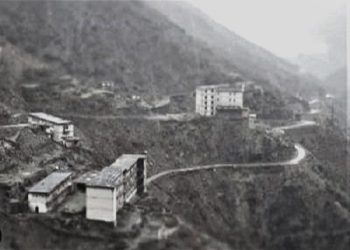Dashnor Kaloçi
Memorie.al publishes the unknown story of the families of Qemal Stafa and Vasil Shanto, who in the first years after the end of the war, were decorated with the high title “People’s Hero” and their names throughout the communist regime and to this day they are considered a symbol of the Anti-Fascist War, but surprisingly until the 1950s, those two families did not receive the pension they were entitled to by law, based on the status of that title. The rare testimony of Mustafa Qilimi, one of the first communists in the Delvina area and commissioner of the first partisan formations in that province (who knew Qemal Stafa closely, after sheltering him for some time in his house in Delvina), who after the War, was appointed and served for years in the position of Vice President of the High Court of the People’s Republic of Albania. As complained to him, Vasil Shanto’s sister in 1950, and Mustafa’s conversation with Gogo Nushi who shed tears when he learned that fact and only his intervention “upstairs”, made that injustice put in place!
None of the thousands of veterans of the National Liberation Anti-Fascist War who every May 5 have taken the road to the ‘Martyrs’ Cemetery’ with flowers and wreaths in their hands to honor the memory of the ideal of their comrades who fell during the ‘Anti-Fascist War’ they know and did not know that 70 years ago, their “Commander”, Enver Hoxha, did not give the pension to the “People’s Hero”, the families of two of the most prominent figures and symbols of that War, Vasil Shantos and Qemal Stafa. The sensational testimony comes from Mustafa Qilimi, one of the first communists in the Delvina area and commissioner of the first partisan formations in that province (who knew Qemal Stafa closely, after sheltering him for some time in his house in Delvina). , who after the War, was appointed and served for years in the position of Vice President of the Supreme Court of the People’s Republic of Albania (with the rank of colonel), until he retired. In his exclusive testimonies about this event that Mr. Mustafa Qilimi has given us to make them public, he has explained everything in detail, how Enver Hoxha initially denied the pension that legally belonged to the families of two of the main figures, a symbol of the “Anti-Fascist National Liberation War” and how it became possible to solve that “problem”, after his intervention when he was in the function of the Deputy President of the High Court of the People’s Republic of Albania.
Qilimi: “Enver did not give the pension to Qemali and Vasili”
But what is the truth of not giving the “People’s Hero” pension to the families of Qemal Stafa and Vasil Shanto and who was the person who stopped them? Regarding this, Mustafa Qilimi testified: “Back in the early 1950s, when I was the President of the Military College at the High Court and at the same time as the Vice President of that Court headed by Aran Çela, he called me and his sister. Vasil Shantos and asked to meet with me. After I left the meeting and received her in my office, she told me that although her brother Vasil Shantos had been given the high title “People’s Hero”, the pension that their family should have received under the law was not granted. was given. Vasili’s sister also told me that the same thing had happened to the family of Qemal Stafa, who were not entitled to the pension they were entitled to, at a time when several other families who had their members entitled “People’s Hero “, They took it regularly. Vasil Shanto’s sister was recommended to come to me by Qemal Stafa’s family, whom I had known since the beginning of 1942 when he took refuge for a few days in my house in Delvina. Also from the acquaintance I had with Qemal Stafa during the War, I had maintained and continued to be friends with Qemali’s brother, Alajdin, with whom we often met and talked about everything. After hearing Vasili’s sister’s complaint, I immediately called Gogo Nushi, who was then Secretary of the Central Committee and told him about the injustice done to the families of Qemal Stafa and Vasil Shanto, telling him that I had one in the office. Vasili’s sister. Gogo Nushi was touched by what he heard and as he talked to me on the phone, he started crying. He closed the conversation with me, promising to follow through on the problem and get back to me as soon as possible. After that, Vasili’s sister left the office and the problem of pensions for the Stafa and Shanto families was fixed after some time. “I no longer asked Gogo Nushi who was the person who had ordered the non-payment of pensions to the People’s Hero to the families of Qemali and Vasili, but I learned from him that this was only resolved with the intervention of Enver Hoxha,” Mustafa testified. Qilimi added that at the time, apart from Enver Hoxha, no one else had the opportunity to stop giving pensions to the families of Vasili and Qemali, who were two of the symbols of the Anti-Fascist War.
How was the number of martyrs exaggerated?
Immediately after the end of World War II, Albania, like all other Eastern European countries that took part in that war and sided with the states of the victorious Anglo-Soviet-American coalition, began to calculate the damage it had suffered. because they would benefit from reparations, (compensations) from countries that turned out to be lost, such as Italy and Germany. At that time, according to the directives of Moscow and personally Stalin, many of the Eastern European states exaggerated the damage they had suffered from that War and the number of casualties. This was done for two reasons: the first was for propaganda where the communist states wanted to show that they had fought hard against the Nazi-fascist axis, and the second was that they wanted to benefit as much as possible from the reparations of the War. In this context, the number of people killed during the war in Albania was exaggerated. Thus, on his first visit to the Soviet Union, Enver Hoxha told Stalin that “his small country had taken more than 75,000 Italian and German forces out of the fighting, and 28,000 martyrs had fallen from the fighting.” This figure, which was then used by Stalin and used for 45 years by the propaganda and historiography of the communist regime, was calculated in such a way as to correspond to the territory of 28,000 km. which occupied Albania, where it fell for every km. to have a martyr. But what is the true number of martyrs killed in the war and of Italian and German soldiers killed in Albania? Although the figure of 28,000 martyrs was known to be exaggerated, it became public only after the 1990s when the communist regime was overthrown. If we refer to the well-known researcher of history and the authors of a series of books, the former MP Uran Butka, who after the 1990s, has been very involved in the study of archives, it turns out that the real number of those killed in the war is not exceeded, 3,800 people. This figure has not only come out through official archival documents that Mr. Butka was available (as Chairman of the Commission for the Evaluation of Figures), but it is more than logical and is confirmed by the ‘Martyrs’ Cemetery’ that are all over Albania. The number of partisan Brigades of the “National Liberation Army” commanded by Enver Hoxha and Spiro Moisiu, was 28, but in fact, there were 25 Brigades, three of which were not created at all. If we take into account the approximate number of 1000 partisans that each Brigade had, and if we add another 3,000 who have been participants in the territorial detachments, their number reaches 28,000 partisans. In this context, and if the figure of 28,000 martyrs is taken as true, it turns out that all those who lined up in the partisan brigades had to be killed. While the number of martyrs was published in 28,000 people, in the two northern districts there was no drop in the war at all and it turned out to be a problem that there was no place to commemorate May 5 as Martyrs’ Day. This was resolved by making administrative changes to some of the villages that had martyrs, which were moved to neighboring districts, in order to create a cemetery for the martyrs where May 5 would be commemorated. Similarly, communist propaganda for 45 years falsified and fictitiously increased the number of Italian and German soldiers killed in Albania. If we refer only to the memoirs of General Arif Haskos, which were published before his sentence as “enemy of the people”, it turns out that only in the fights for the liberation of Tirana, the partisans killed and expelled about 3000 Germans. If you look at the archival documents, the truth is quite different, and this figure turns out to be exaggerated with a large number of zeros. This is confirmed by the memoirs of former Prime Minister Ibrahim Bicaku, who, among other things, testified: German who had come in those days, who was the Commander of the Defense of the Western Coast of the Balkan Peninsula (from Cape Matapan of Greece to Trieste). According to the documents he had, the number of Germans who had been installed in Tirana reached 310 and they were commanded by a second captain, named Falke. From the searches carried out by the Germans themselves during the communist regime of Enver Hoxha (early 1960s) to find the remains of their soldiers killed in Albania, it turns out that only 61 of them were found.
The first titles “Hero of Nations”
Immediately after the end of the war, the communist government of Enver Hoxha began announcing the “Martyrs of the Fatherland” and awarding him the high titles “Hero of the Nations”. This title was so named because the communists considered themselves internationalists and homeless. While the number of those who were declared “Martyrs of the Fatherland” was very large, the number of those who were awarded the title “Hero of the Nations” was very small. The condition for this was that in order to win the title of Hero, you had to be a hero in war. The title of hero was so strict that it was not given to him and some of the most prominent figures of the War, such as the case of Jordan Misja, were denied. While his two comrades who fought with him, Perlat Rexhepi and Branko Kadisa, were awarded that title, Jordan Misja was not given one but was called only a Martyr of the Fatherland. The reason for not giving the title “People’s Hero” to Jordan Misje, who was executed by the Italians, was that he was not killed from the beginning like Perlati and Branko Kadia, but was caught alive by them after being thrown into the well. While this title was denied and not given to some of the well-known names who were said to have really done heroism and were killed in the War, it was taken by some others who were alive, as most of the top leadership. communist, starting with Enver Hoxha. The first living people to be awarded the high title “Hero of the Nations” and who deserved it for their contribution to the War were Myslym Keta and Tuk Jakova. But Tuk Jakova’s title was later revoked when he was declared an “enemy of the people” and sentenced to prison, and Myslym Keta was not very happy that after his “accidental death” in 1966, he was buried in the public cemetery of Shish-Tufina, (where it is still located today), although the plot where his remains are buried, was considered: “of the people elected and valued by the Party”! But this was indeed a sharp irony (not to mention a mockery), as if it were to evaluate those people who rested there, as was the case with the People’s Hero, Muslym Keta, the Party would he placed them very well in the “Cemetery of the Martyrs of the Nation.” Also, until 1948-’49, Enver Hoxha’s communist government awarded him the high title “Hero of the Nations” and some Yugoslavs who had been in Albania during the war, as well as several others, mainly from the top leadership. Yugoslav communists, like Marshal Josip Broz Tito, who had never been to Albania ?! But that was justified by the contribution of the Yugoslav Communist Party led by Josif Broz Tito to the creation of the Albanian Communist Party, sending its two emissaries, Dusan Mugosha and Miladin Popovic, to attend the founding meeting on November 8, 1941. ), as well as a number of party and military advisers, such as Zvetozar Vukmanovic Tempo, Niaz Dizdarevic, Velimir Stojnic, etc.
Imprisonment with apples and apples for the families of martyrs
Although during the entire period of the communist regime of Enver Hoxha, many of the families of martyrs who had that title (“People’s Hero”), and were treated as such, except for the name, which should be said that there were not a few, they and they had that status as an “umbrella” to gain something, or more, such as housing, good jobs, study rights, etc., or simply to protect themselves from the communist regime! As it is known, some of their relatives were beaten and ended up in the regime’s internment and prisons, accused of being “enemies of the people.” So did the family of “People’s Hero” Kol Kuqali, whose father died in communist prisons, accused of being “an Anglo-American agent and an enemy of the people”, although his two sons, Gjika and Thomai, died in the concentration camps of Mat’hauzen and Prishtina were declared “Martyrs of the Fatherland”. Others who suffered in the prisons of Enver Hoxha’s communist regime were Vasil Laçi’s brother (“People’s Hero”), Ndoc Mazit’s brother (“People’s Hero”), Mihal Durit’s sister (“People’s Hero”). ”), The husband of Vasil Shanto’s sister (Petro Bullati), who was shot in 1956), the brother of Xhevdet Nepravishta, (“ Martyr of the Fatherland ”) Abedin Nepravishta who suffered 20 years in prison, the brother of Astrit Kokoshi (“ Martyr ”) of the Homeland ”), brother of Hiqmet Buzi (“ People’s Hero ”), Vedat Buzi, who died in prison, Skënder Libohova’s father and brother (“ People’s Hero ”), Reshit Çollaku’s brother (“ People’s Hero ”), and many, many others from all parts of the country. Likewise, the communist regime of Enver Hoxha eliminated almost all those who had and enjoyed the high title of “People’s Hero”, shooting, imprisoning or deporting them, such as Koci Xoxe, Bedri Spahiu. Tuk Jakova, Gjin Marku, Dali Ndreu, Nexhip Vinçani, Beqir Balluku, Petrit Dume, Hito Çako, Rrahman Parllaku, Vehbo Hoxha, Arif Hasko, Abaz Fejzo, Sadik Bekteshi, Muhamet Prodani, Mehmet Shehu, etc. etc. After the early ’70s, when the socialist anomia went into complete collapse and the market began to empty, the only “benefit” that those families who enjoyed status as “martyr families” had was any weight. apples, brandy, or packets of coffee, which the communist regime gave them every May 5 in addition to the toll, when “fellow leaders” would visit them!
Communist Party tract after the assassination of Qemal Stafa
TRACT OF THE COMMUNIST PARTY OF ALBANIA WITH THE CASE OF THE SECOND FALL OF QEMAL STAFF, ANTAR OF THE CENTRAL COMMITTEE OF THE ALBANIAN COMMUNIST PARTY
(May 1942)
COMRADE QEMAL STAFA MARTYR
To fly life with pain If we follow you
Almost every hour In the darkness of darkness
For the Ideal Under the Red Flag
We have bitter ramen. We will gain freedom.
Qemal Stafa, a young and valuable friend, died fighting bravely as befits the communists. From a very young age, Qemal Stafa started the war that did not stop until the last moments of his life. For nearly two years, he escaped the clutches of fascist bloodthirsty people who wanted to suppress him, to rot in the darkness of the prison, and in difficult conditions of illegality, he continued the war day and night, without ceasing, to kick the occupant-cruel and for to ensure the freedom of the Albanian people. In recent days, Comrade Qemal has shown that he was ready to give his blood for the freedom of these people, and he shed that generous blood to the last point, irrigating the land where the shoots of our ideal will sprout. In Tirana, in the house where he lived with other comrades-in-arms, Qemali was surrounded by soul-stirring agents of the fascist barbarians. Qemali quickly escorted his friends to one side of the house and stood by himself to allow his comrades to leave as soon as possible. When the agents approached, they opened fire with hand grenades and a revolver in their hands, injuring two of them. In this way he broke the siege, went out, and fled, fighting with the other agents who were following him. Also in an illegal (unequal) war a bullet the traitor took Qemali. Little by little the wound cooled, his strength was cut off and he fell to the ground. When he saw that they were approaching, Comrade Qemal gathered the remaining forces and called with all his might: “Long live free and democratic Albania. Long live Communism and Comrade Stalin. Death to fascist savagery! ” At that moment, the bloodthirsty cattle stuck their bayonets in their mouths. Qemal Stafa died as the heroes die. He died fighting just as the other heartbroken communists died: Bakua, Kadija, Shijaku, Noku. He died as men die, but his comrades are alive and the flag for which he was martyred will be raised even higher. His comrades are on their feet and will continue the fight until the end, until the blood of the martyrs is washed away with the blood of the traitorous traitors until they take the whole soul of the fascist coup and secure a free Albania. Democratic and Popular.
Sing and distribute, do not surrender to the enemy!
Memorie.al




